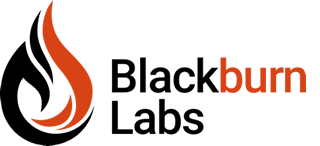What is Smoke Testing in Software Engineering?
Imagine you're in the kitchen, trying out a new recipe for the first time. You've mixed all the ingredients you think are right, set the oven, and now you're waiting with bated breath for the outcome. Then, you see it—a wisp of smoke sneaking out from the oven. You think to yourself, “Smoke! My Dinner is burning!” This moment of truth in cooking is not unlike the first step in software testing known as “smoke testing.”
Much like quickly opening the oven to check if your meal is on fire, smoke testing in software engineering is about taking an initial peek at a new software build to see if it's “cooking” properly. The idea is to run a quick, surface-level test to check the basic functionalities—the software's equivalent of making sure your cake isn't turning into charcoal. If you spot “smoke”—glaring issues right off the bat—it's a telltale sign that there might be deeper, more complex “fires” (read: bugs) lurking in the code.

By identifying these overt signs of malfunction early, the development team can infer that there might be deeper, more intricate problems—akin to finding smoke and suspecting a fire. Addressing these issues at this nascent stage prevents the waste of time and resources on more exhaustive testing phases for a build that is fundamentally flawed. It ensures that only software builds with a solid foundation of basic functionality move forward in the development cycle, thereby streamlining the testing process and enhancing the overall quality and stability of the final product.
Benefits of Smoke Testing
Smoke testing paves the way for a streamlined development process, offering several compelling advantages. Benefits includes:
- Early Detection of Defects: Smoke testing helps in identifying major issues at the start of the testing cycle, saving time and resources.
- Quick Feedback: It provides quick feedback to the development team about the build's stability.
- Cost Efficiency: Catching and fixing defects early is generally less expensive than dealing with them in later stages of development or post-release.
The practice of smoke testing provides a multitude of benefits, chief among them being the early detection of defects, which in turn saves significant time and resources. By offering rapid feedback on the build's stability, smoke testing enables a more efficient troubleshooting process, thereby reducing the overall development costs. This approach not only conserves resources but also ensures a smoother, more reliable development lifecycle, ultimately contributing to the delivery of a higher quality final product.
Tips for Smoke Testing
To harness the full potential of smoke testing in software engineering, it's helpful to approach it with the right strategies. From maintaining simplicity to frequent execution, each piece of advice aims to refine your testing approach, making it a powerful tool in identifying key issues early in the development cycle. By adopting these practices, teams can foster a more reliable, agile, and quality-focused development environment.
- Keep It Simple, Smarty: Remember, smoke testing is like checking if your toast is done – you don't need to dissect the bread to know it's ready. The goal here is to verify the core functionalities of a software build without getting lost in the weeds. Focus on straightforward tests that skim over the primary features and workflows, allowing you to swiftly gauge the build's health. It’s about getting a quick 'yea' or 'nay' before moving on, ensuring your software doesn't end up 'toast'.
- Test Early, Test Often: Embrace the 'rinse and repeat' mantra of smoke testing. Due to their quick and low-cost nature, smoke tests should be run frequently — don’t hold back. This constant vigilance ensures that you're always a step ahead of potential issues, making it easier to keep the development cycle smooth and uninterrupted.
- Prioritize the Essentials: A targeted approach is best in smoke testing. This means to focus on any recently changed code and features and the critical path. This approach ensures you're not attempting to test the entire application but rather focusing on areas most susceptible to impactful issues. By honing in on these key aspects, testers can more efficiently identify potential problems, saving time and resources while maintaining a keen eye on the software's most vital functionalities.
- Cultivate Psychological Safety: Establishing a culture of psychological safety is a cornerstone for any testing process, not just smoke testing. Team members should feel empowered to conduct ad-hoc smoke tests without fear of criticism for imperfections. This environment encourages proactive issue identification and resolution, reinforcing the notion that smoke testing is a preliminary step meant to catch glaring issues early.
- A Collective Endeavor: One of the distinguishing features of smoke testing, setting it apart from many other forms of testing, is that it is not confined to the QA or development team alone. Anyone, in fact everyone, should be comfortable running quick smoke tests at any phase of the project. This inclusive practice enhances the effectiveness of early defect detection, making it a shared responsibility that leverages diverse insights to fortify the software.

In the realm of software engineering, smoke testing serves as the preliminary assessment akin to a quick sniff test in the culinary world, ensuring that the basic functionalities of a software build are not just operational but also stable.”Rob Blackburn
Chief Technology Officer (CTO), Co-Owner
Conclusion
In the realm of software engineering, smoke testing serves as the preliminary assessment akin to a quick sniff test in the culinary world, ensuring that the basic functionalities of a software build are not just operational but also stable. The essence of smoke testing, emphasizing its simplicity, the necessity for routine execution, the focus on critical and changed components, and the importance of fostering a culture of psychological safety within development teams. By integrating smoke testing into the development lifecycle, teams can significantly enhance the efficiency of their testing process, saving both time and resources, while paving the way for more comprehensive testing strategies to ensure a high-quality final product.
